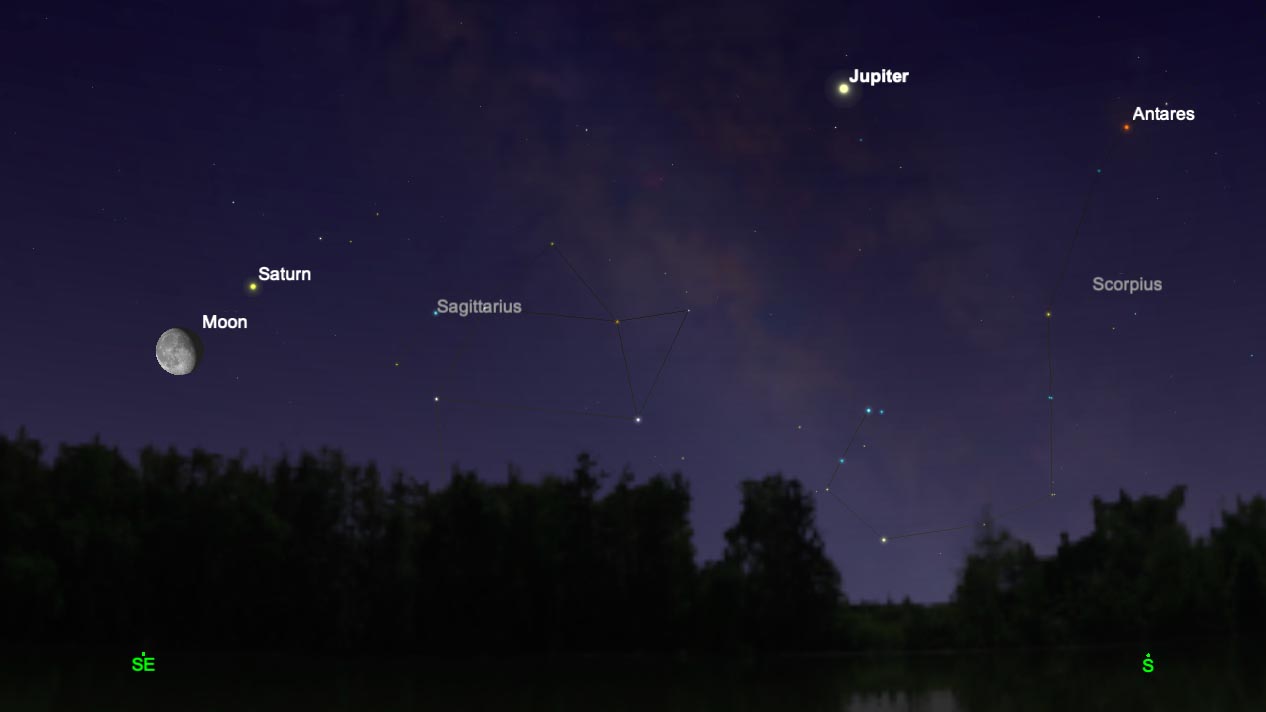Watch Saturn Play Peekaboo with the Moon Tonight!

The moon will make a close pass to Saturn this evening (May 22), so close that our natural satellite will block the view of the ringed planet for skywatchers in parts of the world.
In parts of southern Africa and Antarctica, skywatchers will see Saturn play "peekaboo" with the moon. Elsewhere in the world, the two celestial bodies will appear about one-third of a degree apart at 6:14 p.m. EDT (2214 GMT). At that time, Saturn and the moon will be in conjunction, meaning that they will share the same celestial longitude.
Depending on where you are, you may have to wait until Thursday morning to see the pair together. Across the U.S., Saturn and the moon will be below the horizon at the time of their closest approach, and they won't be visible until after midnight. If you'd rather not stay up late, you can still catch them in the morning before sunrise, when they will be higher in the sky and just slightly farther apart than they were during the conjunction.
Related: Best Night Sky Events of May 2019 (Stargazing Maps)
For a small portion of the Southern Hemisphere, tonight's conjunction will also bring a lunar occultation, or the aforementioned game of celestial "peekaboo." The occultation will be visible from South Africa, Namibia, Lesotho and Antarctica, as well as a few remote islands in the Indian Ocean. For eastern Australia and New Zealand, the occultation will happen around the time that the moon is setting and the sun is rising on Thursday (May 23), so viewing prospects there are not ideal.
In Cape Town, South Africa, Saturn will disappear behind the moon's edge at 10:18 p.m. local time (2018 GMT), and the planet will reappear at 11:11 p.m. local time (2111 GMT). You can find a timetable and a visibility map for this occultation (and others) at lunar-occultations.com.
- As Saturn Slips Behind the Moon (Op-Ed)
- When, Where and How to See the Planets in the 2019 Night Sky
- Amazing Saturn Photos From NASA's Cassini Orbiter
Email Hanneke Weitering at hweitering@space.com or follow her @hannekescience. Follow us on Twitter @Spacedotcom and on Facebook.
Breaking space news, the latest updates on rocket launches, skywatching events and more!

Hanneke Weitering is a multimedia journalist in the Pacific Northwest reporting on the future of aviation at FutureFlight.aero and Aviation International News and was previously the Editor for Spaceflight and Astronomy news here at Space.com. As an editor with over 10 years of experience in science journalism she has previously written for Scholastic Classroom Magazines, MedPage Today and The Joint Institute for Computational Sciences at Oak Ridge National Laboratory. After studying physics at the University of Tennessee in her hometown of Knoxville, she earned her graduate degree in Science, Health and Environmental Reporting (SHERP) from New York University. Hanneke joined the Space.com team in 2016 as a staff writer and producer, covering topics including spaceflight and astronomy. She currently lives in Seattle, home of the Space Needle, with her cat and two snakes. In her spare time, Hanneke enjoys exploring the Rocky Mountains, basking in nature and looking for dark skies to gaze at the cosmos.

